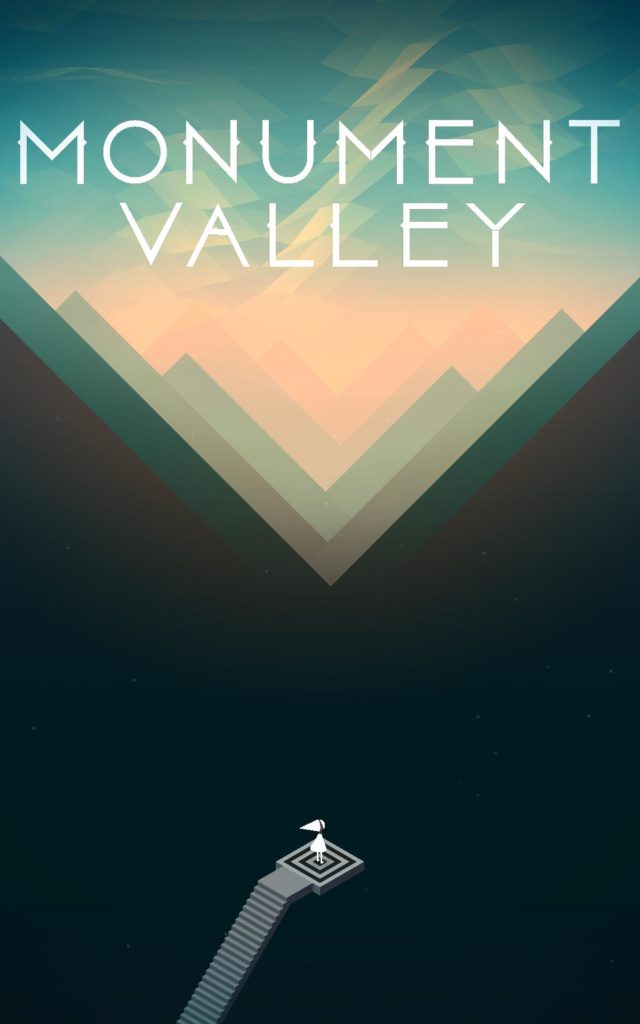
Game: Monument Valley
Creator: Ustwo games
Platform: iOS, macOS, Android, Windows
Target Audience: New & experienced gamers who have access to one of the platforms listed
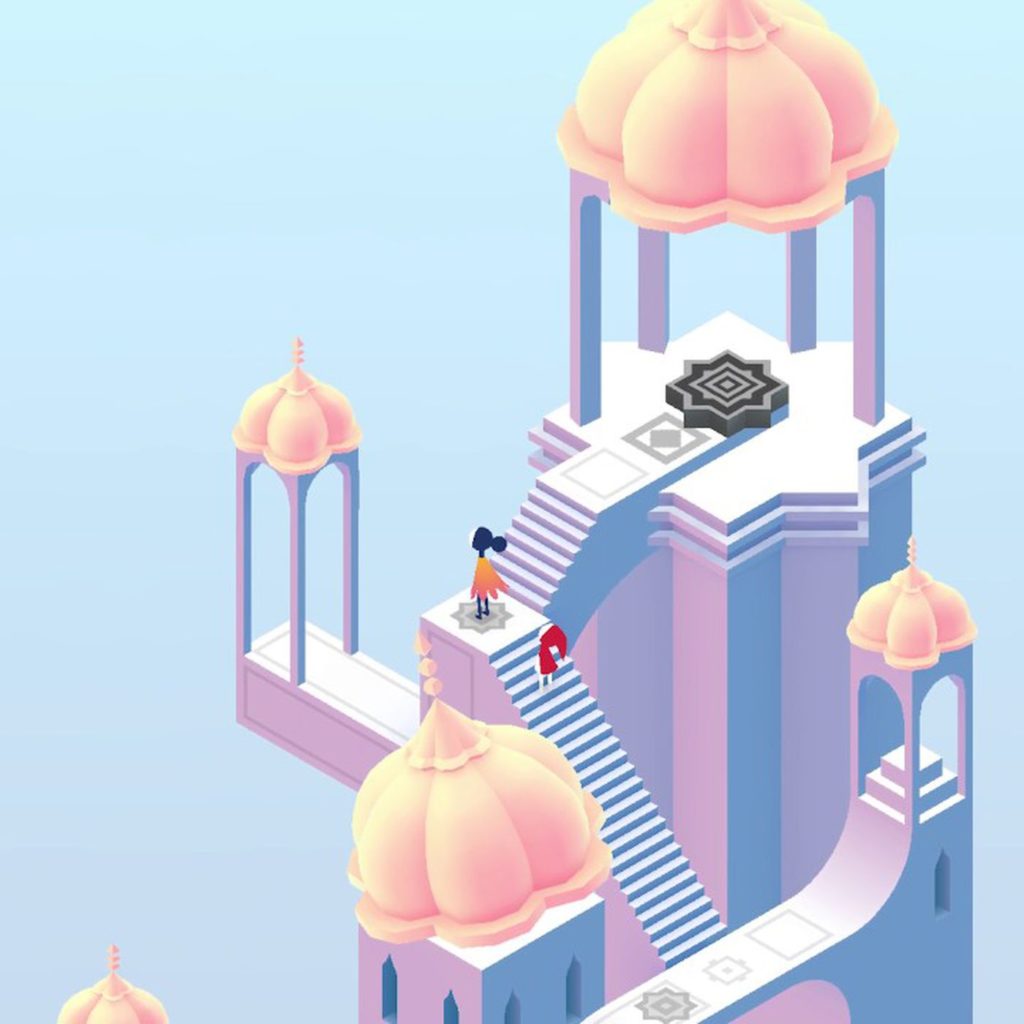
Formal Elements & Aesthetics
Monument Valley is a single-player puzzle game (third-person POV). Multiple levels lead to one another. A player can navigate the space by pressing on the building structure to move the blocks around and create new paths. You can move your character by pressing on a spot in the building/structure that princess Ida (the main character) has access to/can walk to.
The puzzle, in this case, is the game since the objective of the game (to get from one end of the structure to the other) relies on solving the puzzles along the way. The outcome of the game depends on whether the play was able to solve the puzzles or not. A player can only advance to the next part of the game after completing the current level.
Monument Valley creates the aesthetics of Discovery, Challenge, and Sensation. The unknown structure at each level enforces the discovery aesthetics of this game. By nature of puzzles, this game has only one solution at each level, which makes it challenging. Third, the visual representation of the environment is satisfying, which meets the sensation aesthetics of this game.
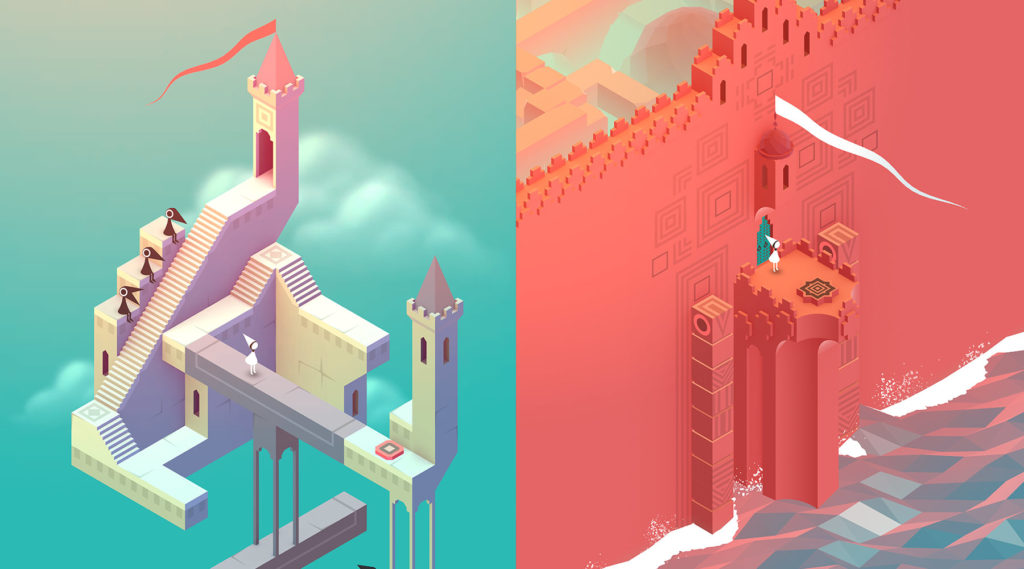
Successes, Fails, & Potential Improvements
The integration of puzzles in the environment is what makes this game unique and quite fun. One thing that worked well here is using puzzles instead of controls to challenge players. This reduced the number of components the player needs to learn to play the game, which makes it easy for all levels of gamers to start playing immediately without much trouble. The different levels also allow for the difficulty to gradually increase as players become more experienced with the game. This way, the game doesn’t get boring but also isn’t too difficult when starting (see photo below).
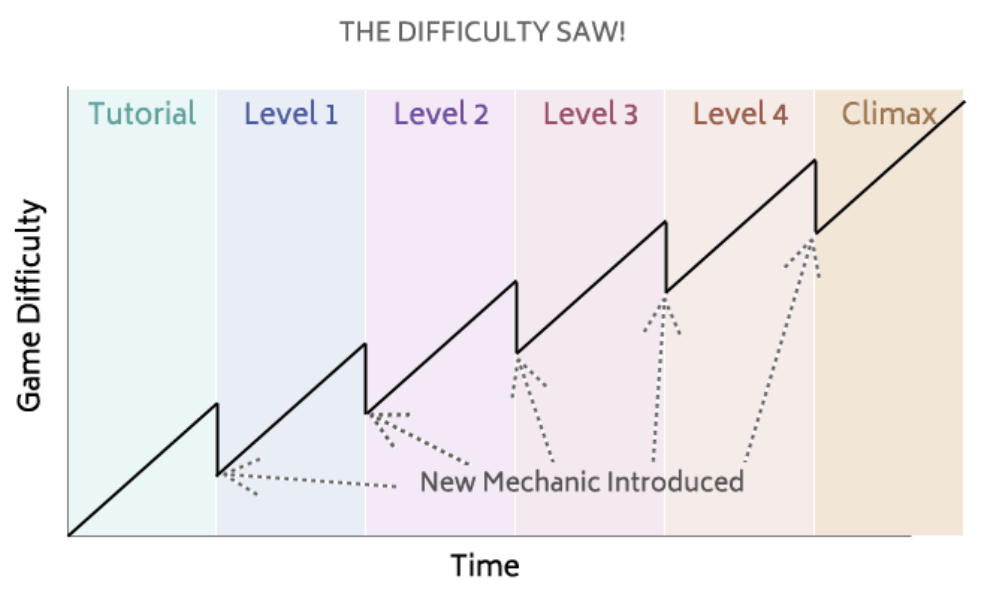
One area of improvement I would suggest is in character development and narrative. I’m not sure if there’s more to the story in the later stages of the game but I am basing this on what I’ve explored thus far. As a puzzle game, I think it does a great job with the puzzles in the game but the narrative is lacking. We get a glimpse of the story/narrative at each level via a screen with a sentence (i.e. “Ida encounters the bothersome crow people”–– see photo below). I would suggest either omitting this backstory because the puzzles are the core element of the game or adding more detail to make it more relevant.
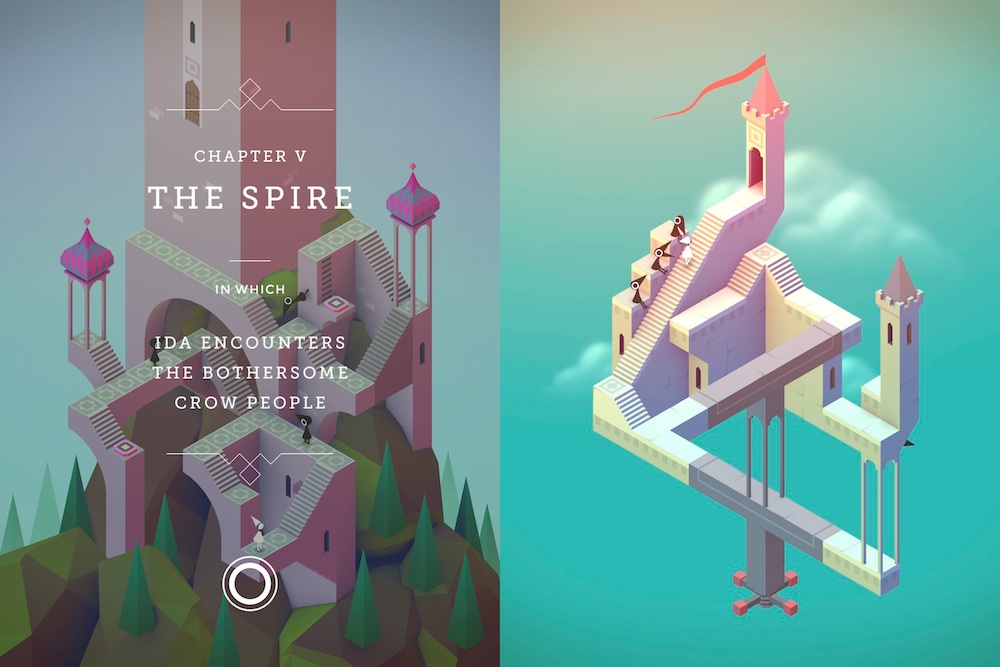
Otherwise, I loved this game both from a designer’s perspective and a player’s perspective. I finally understand why Christina loves this game. It’s so mesmerizing!


